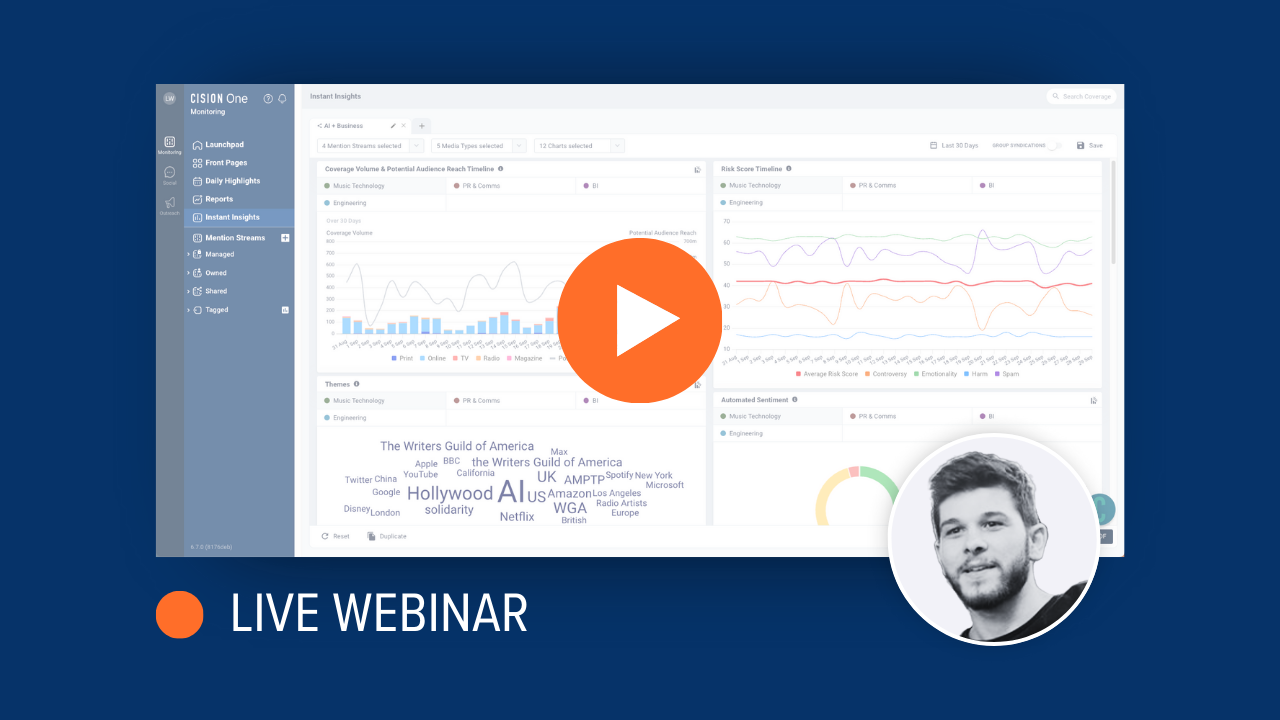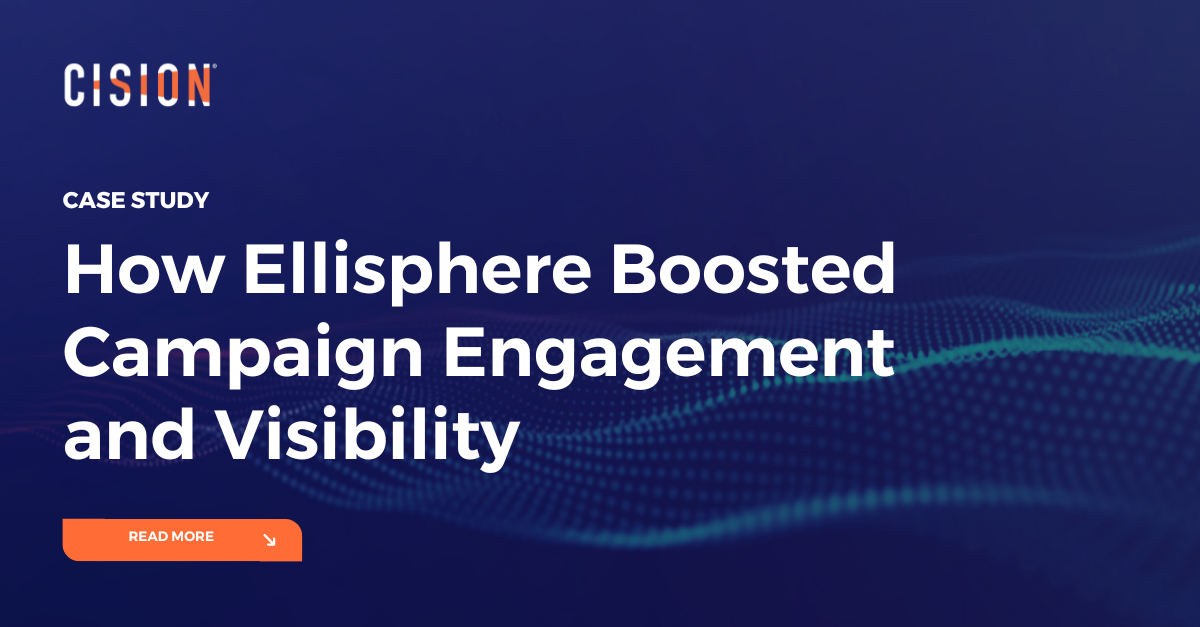“Some of the best stories I've put out, some of the best content I've put out, is because of my relationship with PR folks,” declared Shruti Shekar, Tech Expert and Managing Editor at Android Central, during the recent webinar, How to Navigate the Evolving Media Landscape: Perspectives from Top Journalists.
Shekar joined esteemed journalists Mosheh Oinounou, Founder of Mo News and Mo Digital, and Alexi Cohan, Digital Producer at GBHNews, and Cision CMO Putney Cloos to discuss the current and future state of the media and media relations, based on the findings from Cision’s recently released 2023 State of the Media Report.
For this year’s report, in addition to getting journalists’ perspectives on tactics to secure earned media coverage, Cision set out to help PR and communications professionals better understand journalists’ real-world challenges and priorities, and how they could position themselves as partners in authentic, truthful storytelling.
With the input of these journalists, we were able to dig deeper into those findings and gain an even richer perspective on the nuanced relationship between the media and PR professionals. The resulting insights and takeaways from this conversation were nothing short of illuminating. While we encourage you to watch the full conversation (now available on demand), we’ve assembled some of the biggest takeaways and best lessons for PR and communications teams from that conversation here.
Data can help earn and elevate trust and credibility, but transparency is key
In this year’s survey, journalists indicated their biggest challenge was maintaining credibility as a trusted news source and combating accusations of fake news. When asked how PR and communications teams can support their mission to deliver accurate, bias-free reporting, and to help stop the spread of misinformation, the journalists on our panel cited data as a critical element.
But if you’re to deliver data, take note: “To the extent that you can provide information and data, be transparent about that data,” said Oinounou. “That will be key to winning over journalists who are trying to reinforce to their audiences that their story is legit, that their information is legit and can be trusted.”
Shekar added that, in addition to knowing the source of the data, she also is looking for PR partners who can offer up an expert who can speak to the data and what it means. “If you're pitching an individual who can talk about that survey, [let me know] who is this individual, what's their background?”
It’s also important to remember that you do not always have to use original data, reminded Oinounou. If you have data from a credible institution – Pew, Gallup, The Washington Post, Wall Street Journal, etc. – and can speak to how your organisation is reinforcing that trend, that can be just as powerful.
“One piece of advice I often give PR folks is to think about: What is your story in the context of the larger story?” Oinounou said. One story on its own can be hard to “break through,” with journalists; however, if you can frame your story in the context of a larger story or trend (“If you can say, ‘There’s a larger thing happening in America/your region/your city/your specific area of your coverage, and let me tell you why what we're doing lends itself to that.’”), that story is more likely to get covered.
Social media for relationship – and brand – building
Social media has proven an additionally effective way to connect with audiences and PR professionals for the journalists, but not without its challenges – especially with the recent “implosion of Twitter,” which Shekar cited as a reason she has been using social media with less frequency lately.
Still, social media remains a great relationship-building tool for Shekar, as well as a quick and easy way to connect with PR professionals and get access to experts. “To be honest, it’s a lot faster than e-mail,” Shekar noted. “I’m constantly DM’ing people.” Similarly, direct messages on social media are more likely to get responses from Oinounou than emails.
While Cohan still prefers getting pitches via email, she sees opportunities for using social media to collaborate with PR professionals. “If someone sent me a pitch that was like, ‘Do you want to make a YouTube short with my client?’ I would be like, ‘Yeah, let's do it!’” Cohan said.
Beyond being a way to connect with journalists, social media presents a major brand-building opportunity for PR and communications professionals.
“The first thing I look at when you're pitching stuff is your social media pages,” Oinounou said. He says having a credible social media presence is key to establishing credibility with reporters “especially if you're a startup or a new organisation or one that hasn't gotten much publicity".
Cautious optimism around artificial intelligence
With communications teams questioning what ChatGPT and other generative AI tools will mean for the future of the industry, the journalists weighed in on how they see it affecting their industry. All three recognised AI technology for its advantages, while expressing the need to be even more diligent when verifying and validating content.
“’Are you real, a new PR person reaching out to me? Or are you an AI bot?’ That is the question we now have to ask,” Oinounou said of how AI is affecting the PR/journalist relationship.
Shekar indicated the opportunity they have as journalists to set the standard for responsible use of AI: “I think we [as journalists] should be helping people figure out how to use it in more credible and effective ways, but I also think it's very easy to take advantage of,” she said.
Added Cohan: “I would hope and think that other journalists are not just grabbing [what AI generates] and putting it right out there.” While Cohan has used tools like ChatGPT to help write some content, she is diligent about validating the information she’s getting from it, customising the content and even using it to generate ideas.
While AI’s true impact on both journalism and PR has yet to be seen, one thing that’s certain is that AI only amplifies the need to build those authentic relationships with journalists. “Building that relationship is so incredibly critical,” Shekar said, particularly in the aftermath of COVID, which “really changed the dynamic in the way that we were connecting with one another".
Oinounou later put forth a similar sentiment, saying that even as technology evolves, delivering truthful, honest storytelling will remain key in building trust and loyalty with audiences.
“[Consumers] are overwhelmed by information sources, apps, the world these days,” Oinounou said. “So it just makes what you're doing all the more challenging, because you have even less time to hook them; but you want to do so honestly so they come back and [find that] whatever you sold them, whatever did to hook them, is actually what you deliver.”
Final thoughts: What’s next for the future of journalism and PR
To close out the conversation, Cloos asked the panelists if they had any advice for PR and communications professionals in trying to build relationships with journalists. Resoundingly, all three journalists agreed that putting in the time and effort to understand the journalists you’re reaching out to first will go a long way in building credibility and trust.
“It's really important, as you're trying to build that relationship with your journalist, to really get to know who they are. Know who we are, what we cover, the topics we like to write about,” said Shekar, who expressed deep appreciation for the PR and communications professionals who she has worked with throughout the years. “I'm so grateful for those relationships because I keep going back to those people and saying, ‘Hey, let's keep working together.’”
To hear the full conversation and gain more insights, watch the full webinar on demand. For more insights from our survey of over 3,000 journalists worldwide, read the 2023 Global State of the Media Report.
Most Recent Posts
Cision Resources
-
E-books and Guides
Comprehensive how-to guides on strategy and tactics
-
Case Studies
What are other brands doing – and how can we learn from them?
Learn More. Do More. demo new
PR Tips, Case Studies, and Product Updates

[On-Demand Webinar] The Next Generation of Media Intelligence: From Gorkana to CisionOne
Explore CisionOne, a revolutionary media intelligence platform, and the evolution of Gorkana. Learn key features and strategies from Luke Williams, CisionOne Product Marketing Manager. Elevate your media outreach to new heights!

